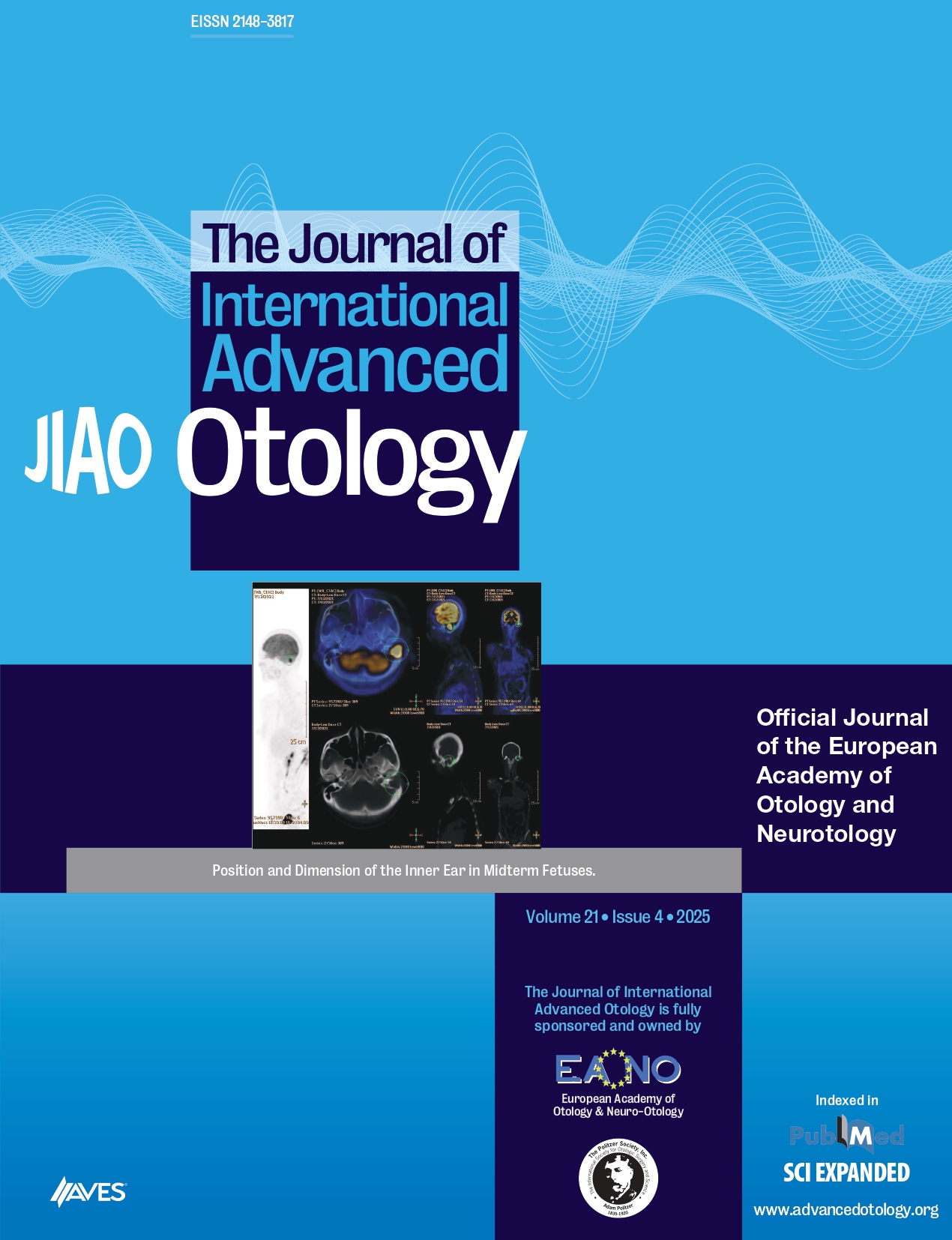OBJECTIVES: To evaluate the functions of cochlear structures and the distal part of auditory nerve as well as dead regions within the cochlea in individuals with normal hearing with or without tinnitus by using electrophysiological tests.
MATERIALS and METHODS: Nine individuals (ages: 21-59 years) with normal hearing with tinnitus were included in the study group. Thirteen individuals (ages: 25-60 years) with normal hearing without tinnitus were included in the control group. Immitancemetric examination, pure-tone audiometry (125Hz-16kHz), speech audiometry in quiet and noise environments, transient evoked otoacoustic emissions (TEOAEs), distortion product otoacoustic emissions (DPOAEs), threshold equalizing noise (TEN test (500Hz–4kHz), and ECochG tests, Beck Depression Questionnaire, Tinnitus Handicap Questionnaire, and Visual Analog Scale were performed.
RESULTS: In the study group, three patients were found to have a minimal depression and six were found to have a mild depression. In pure-tone audiometry, the threshold (6-16 kHz) in the study group was significantly higher than that of the control group at all frequencies. In the study group, lower performance scores were obtained in speech discrimination in noise in both ears. In the control group, no dead region was detected in the TEN test whereas 75% of subjects in the study group had dead regions. DPOAE and TEOAE responses between study and control group subjects were not different. In the ECochG test, subjects in the study group showed an increase in the summating potential/action potential (SP/AP) ratio in both ears.
CONCLUSION: Determination of the SP/AP ratio in patients with tinnitus may be useful in diagnosing hidden hearing loss. Detection of dead regions in 75% of patients in the TEN test may indicate that inner hair cells may be responsible for tinnitus.
Cite this article as: Kara E, Aydın K, Akbulut AA, Karakol SN, Durmaz S, Yener HM, et al. Assessment of Hidden Hearing Loss in Normal Hearing Individuals with and Without Tinnitus. J Int Adv Otol 2020; 16(1): 87-92.



.png)
.png)